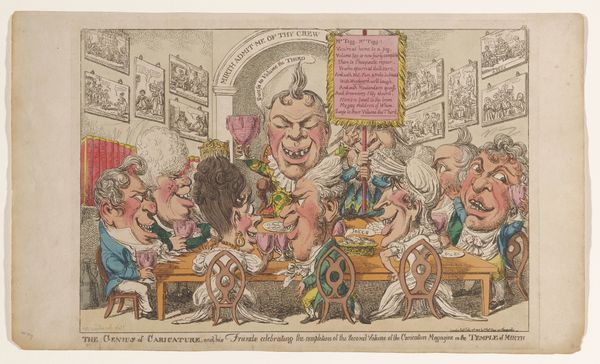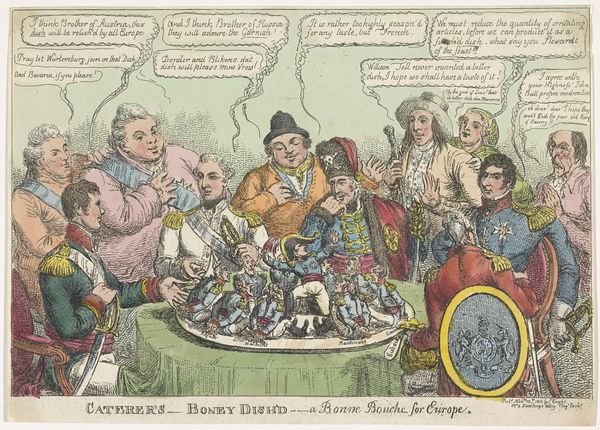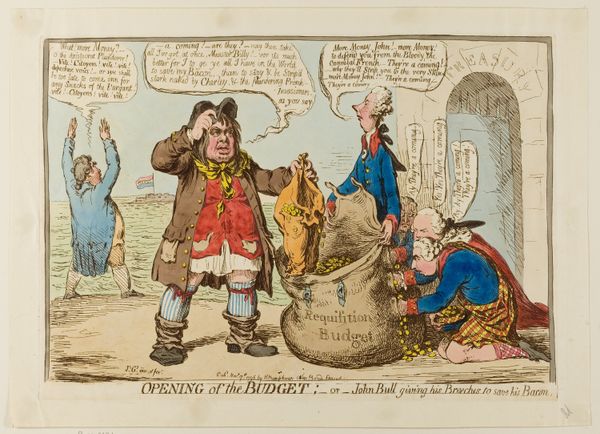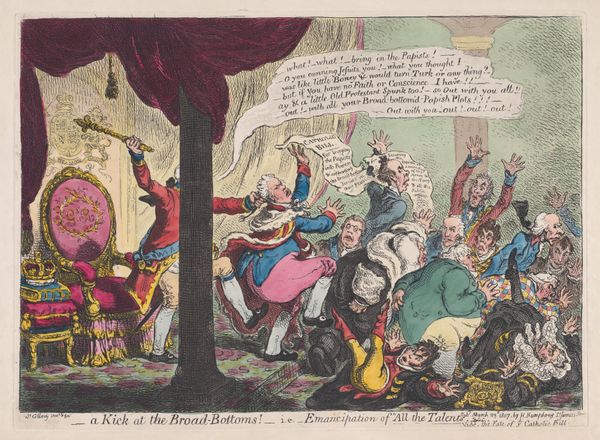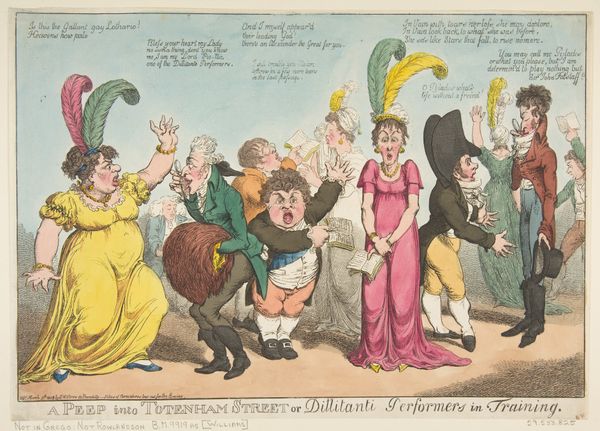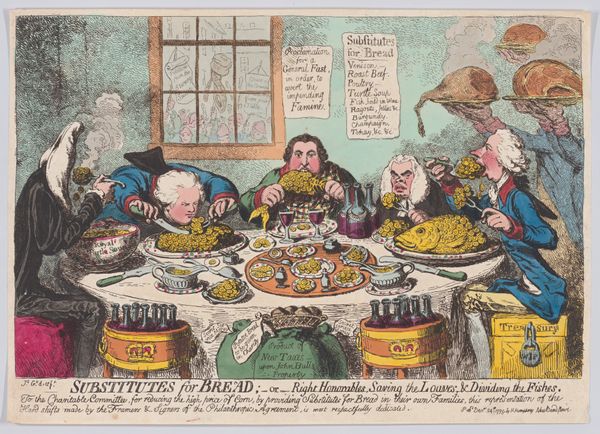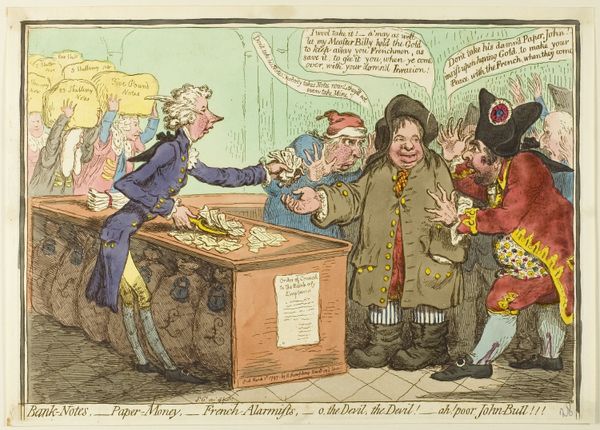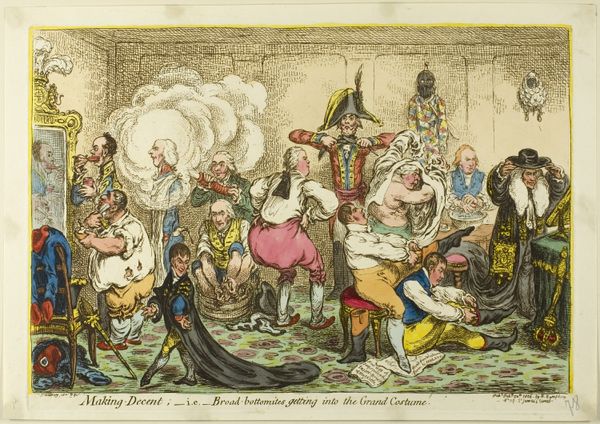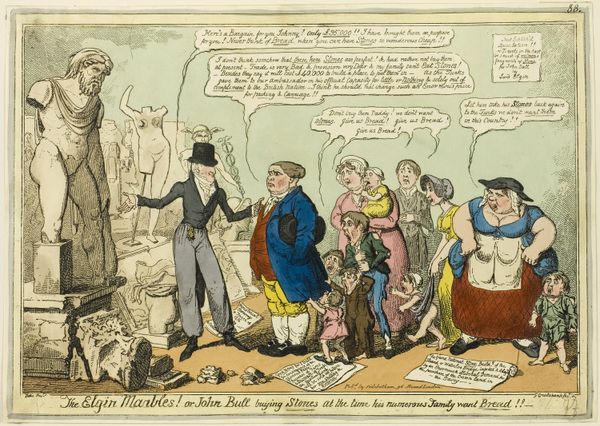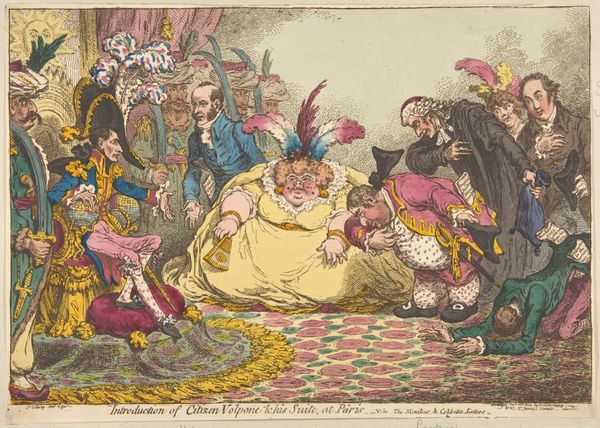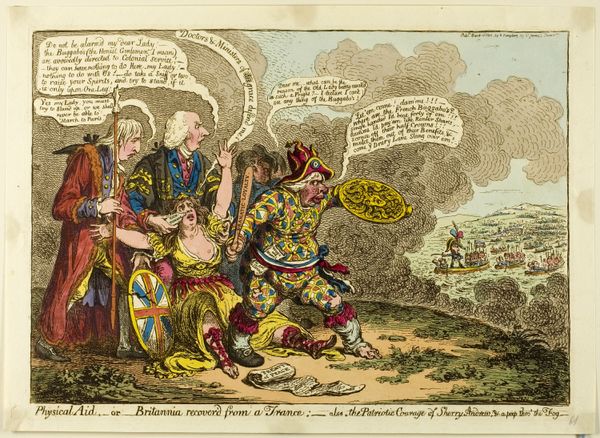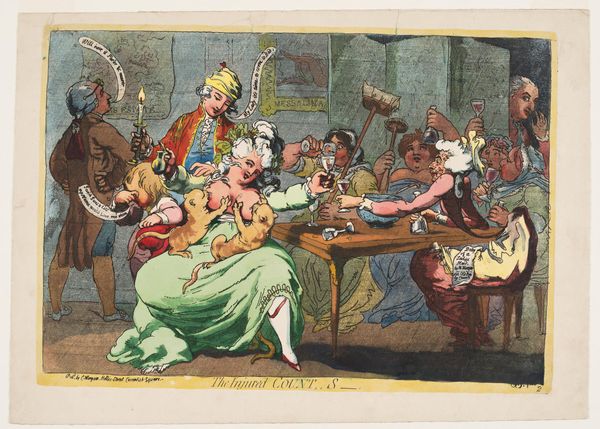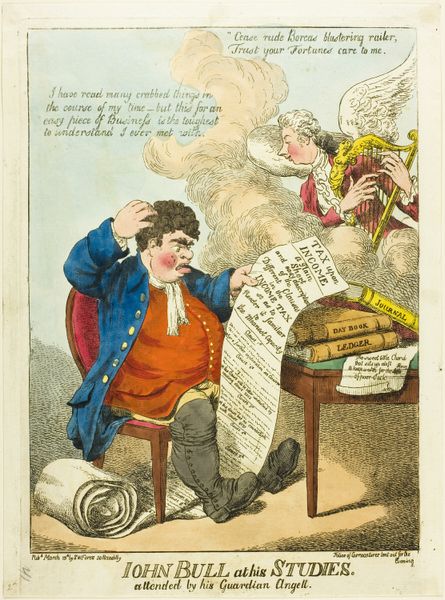
The Genius of Caricature, and his Friends, celebrating the completion of the Second Volume of the Caricature Magazine in the Temple of Mirth 1808
0:00
0:00
drawing, print, ink
#
portrait
#
drawing
# print
#
caricature
#
ink
#
group-portraits
#
romanticism
#
men
#
genre-painting
Dimensions: Sheet (trimmed): 9 5/8 × 15 9/16 in. (24.4 × 39.5 cm)
Copyright: Public Domain
Curator: This wonderfully lively print, created in 1808 by George Murgatroyd Woodward, is entitled "The Genius of Caricature, and his Friends, celebrating the completion of the Second Volume of the Caricature Magazine in the Temple of Mirth." The medium is ink on paper, and it's currently housed at the Metropolitan Museum of Art. What's your first impression? Editor: An exuberantly grotesque gathering! It's immediately striking how Woodward exaggerates every feature—bulbous noses, jutting chins, wide, gleeful grins. The rosy pink hue applied to their skin seems to amplify the chaotic, almost feverish celebratory mood. Curator: Absolutely. It’s a masterful example of caricature, of course, pushing physical traits to the point of absurdity. What’s also intriguing to me is the "Temple of Mirth" setting. It points to how satire and humor had become almost institutionalized by this point, part of the broader cultural and political landscape. Caricature wasn’t just funny; it held a position of social commentary. Editor: I agree. Look closely at the character holding the large wine glass aloft. It looks almost like a symbolic gesture. And the "Mirth Admit Me of Thy Crew" banner certainly hints at an initiation or acceptance into this jovial brotherhood. I'd be interested in exploring the symbolic significance of the "Temple" itself; perhaps linking back to classical ideals re-interpreted through the lens of Romantic-era artistic expression? Curator: Precisely. Romanticism thrived on intense emotion, and this print, in its own exaggerated way, embodies that spirit. There's also a definite political edge to be found, especially given the period's tumultuous events: the Napoleonic Wars. Caricature allowed for safe criticism, lampooning figures in ways more direct attacks couldn’t. It functioned as a form of catharsis. Editor: Considering the detail, note the smaller caricatures hanging as "art" in the background. It is a statement that caricature is not low brow at all, rather an academic commentary and even commentary upon commentary! They create a layered visual echo that speaks to the proliferation of satirical imagery. It reminds us that these exaggerated visages reflect anxieties, and humor offers both a release and a critique. Curator: Indeed, the layering speaks volumes about caricature's rising status. Well, after analyzing all this I have gained some fresh insight into 19th century artistic and sociopolitical life. Editor: Me too. Analyzing symbolism and visual expression helped enrich and refresh our views on the artwork as well.
Comments
No comments
Be the first to comment and join the conversation on the ultimate creative platform.
